Silent Era Home Page > Home Video > The Cameraman

Reviews of silent film releases on home video.
Copyright © 1999-2025 by Carl Bennett
and the Silent Era Company.
All Rights Reserved. |
|
The
Cameraman
(1928)
|
After completing Steamboat Bill, Jr. (1928), Buster Keaton became a contract performer at Metro-Goldwyn-Mayer when his independent contact was sold by producer (and brother-in-law) Joseph Schenck. At first, the move promised bigger production budgets and wider distribution worldwide for Buster’s films. Ultimately, the change to MGM resulted in a stranglehold on Keaton’s comic creativity, with the ultimate perversion of his screen persona and a disasterous teaming with nightclub performer Jimmy Durante.
However, still rolling forward from his creative independent productions of the mid-1920s, The Cameraman (1928) played like another great Buster Keaton film. Despite being forced to work from a tighter scripted shooting plan, the film is still heavily-sprinkled with Keaton’s inventive improvisational gags.
A meek and bumbling street portrait photographer (Buster Keaton) tries to impress a girl (Marceline Day) who works in a newsreel office by becoming a newsreel photographer. His ineptness causes him to not only lose an opportunity to pick up a lucrative job as a newsreel cinematographer but also to lose his chance at a relationship with Sally, the girl. When Sally is endangered by the self-absorbed stupidity of a rival (Harold Goodwin), Buster comes to the rescue and eventually comes through with the real newsreel goods, thanks to an organgrinder’s monkey.
Buster is quite funny and looks rather dapper in his dark broad-rimmed hat that was a conscious departure from his signature pork-pie hat. Marceline Day is something more than a supporting prop as a leading lady to Buster, thanks to MGM’s insistence on story development. Goodwin is functional as a rival, as he was in Keaton’s College (1927), but Harry Gribbon stands out in the supporting cast as a befuddled policeman.
The original camera negative for The Cameraman survived for many years but was lost in an MGM vault fire in 1951. According to reports, approximately three minutes of footage are presumed lost. Today, the film survives largely complete in 35mm and 16mm duplicate materials that range from very-good to excellent.
— Carl Bennett
|
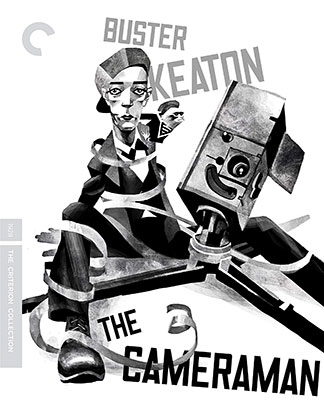 The Criterion Collection The Criterion Collection
2020 Blu-ray Disc edition
The Cameraman (1928), black & white, 69 minutes, not rated, with Spite Marriage (1929), black & white, 76 minutes, not rated.
The Criterion Collection, CC3158BD (collection number 1033), UPC 7-15515-24731-3, ISBN 978-1-68143-730-9.
One single-sided, dual-layered, Region A Blu-ray Disc; 1.37:1 aspect ratio picture in pillarboxed 16:9 (1920 x 1080 pixels) 24 fps progressive scan image encoded in SDR AVC format at 31.6 Mbps average video bit rate; LPCM 2.0 stereo sound encoded at 2.3 Mbps audio bit rate; English language intertitles, no subtitles; 18 chapter stops; 40-page insert booklet; standard BD keepcase; $39.95.
Release date: 16 June 2020.
Country of origin: USA
Ratings (1-10): video: 8 / audio: 8 / additional content: 7 / overall: 7.
|
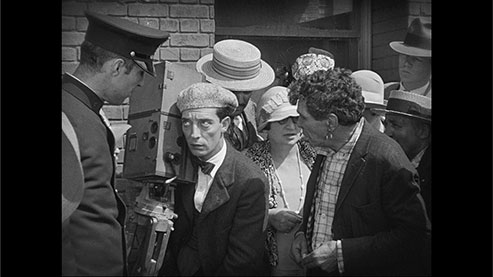
This Blu-ray Disc edition has been produced from a digital restoration undertaken by the Cineteca di Bologna, the Criterion Collection, and Warner Bros. A second generation, fine-grain 35mm positive from MGM, with footage from a 35mm positive of MGM’s Big Parade of Comedy, comprise the best materials utilized for the high-definition 4K scans, with the first three reels scanned from a very-good 16mm reduction print held by the Library of Congress. Image stabilization and dust removal has been performed, and the greyscale range of the scans is evenly balanced.
The film is accompanied by a lively new score by composer Timothy Brock, conducted by Brock and performed by the orchestra of the Teatro Comunale di Bologna in 2020, presented in uncompressed stereo.
The supplementary material contains an audio commentary on The Cameraman recorded in 2004 by Glenn Mitchell, author of A-Z of Silent Film Comedy: An Illustrated Companion; Time Travelers, a new documentary by Daniel Raim featuring interviews with John Bengtson and film historian Marc Wanamaker; Spite Marriage (1929), Buster Keaton’s next feature for MGM after The Cameraman, in a new 2K restoration, with a 2004 commentary by film historians John Bengtson and Jeffrey Vance; So Funny It Hurt: Buster Keaton & MGM, a 2004 documentary by film historians Kevin Brownlow and Christopher Bird; The Motion Picture Camera (1979), a documentary by A.S.C. cinematographer and film preservationist Karl Malkames; an interview with James L. Neibaur, author of The Fall of Buster Keaton: His Films for MGM, Educational Pictures, and Columbia; plus a 40-page booklet featuring an essay by film critic Imogen Sara Smith. Mitchell’s commentary is entertaining but a little uninformed, as he makes a small number of unresearched and inaccurate statements regarding actors’ filmographies and the survival status of a couple of films. Mitchell also manages to mispronounce Marion Davies’ name more than once.
With the tremendous improvement in visual quality in this disc, we highly recommend this Blu-ray Disc of The Cameraman as the best edition available on home video.
|
|
This Region A Blu-ray Disc edition is available directly from . . .
|

|
|
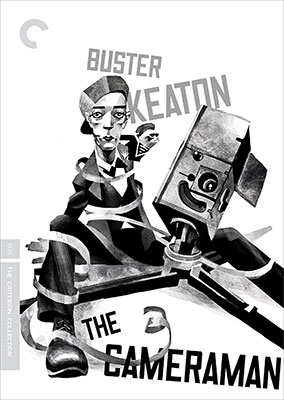 The Criterion Collection The Criterion Collection
2020 DVD edition
The Cameraman (1928), black & white, 69 minutes, not rated, with Spite Marriage (1929), black & white, ? minutes, not rated.
The Criterion Collection, unknown catalog number (collection number 1033), UPC 7-15515-24741-2, unknown IBSN number.
One single-sided, dual-layered, Region 1 NTSC DVD disc (two DVDs in the set); 1.33:1 aspect ratio picture in full-frame 4:3 (720 x 480 pixels) interlaced scan image encoded in SDR MPEG-2 format at ? Mbps average video bit rate (capable of progressive scan upscaling to 60 fps); Dolby Digital (AC3) 2.0 stereo sound encoded at ? Kbps audio bit rate; English language intertitles, no subtitles; chapter stops; insert booklet; standard two-disc DVD keepcase; $29.95.
Release date: 16 June 2020.
Country of origin: USA
|
|
This DVD edition has been produced from a new 4K digital restoration undertaken by the Cineteca di Bologna, the Criterion Collection, and Warner Bros.
The film is accompanied by new score by composer Timothy Brock, conducted by Brock and performed by the orchestra of the Teatro Comunale di Bologna in 2020, presented in uncompressed stereo.
The supplementary material contains an audio commentary on The Cameraman recorded in 2004 by Glenn Mitchell, author of A-Z of Silent Film Comedy: An Illustrated Companion; Time Travelers, a new documentary by Daniel Raim featuring interviews with John Bengtson and film historian Marc Wanamaker; Spite Marriage (1929), Buster Keaton’s next feature for MGM following The Cameraman, in a new 2K restoration, with a 2004 commentary by film historians John Bengtson and Jeffrey Vance; So Funny It Hurt: Buster Keaton & MGM, a 2004 documentary by film historians Kevin Brownlow and Christopher Bird; The Motion Picture Camera (1979), a documentary by A.S.C. cinematographer and film preservationist Karl Malkames; an interview with James L. Neibaur, author of The Fall of Buster Keaton: His Films for MGM, Educational Pictures, and Columbia; plus a 40-page booklet featuring an essay by film critic Imogen Sara Smith. Mitchell’s commentary is entertaining but a little uninformed, as he makes a small number of unresearched and inaccurate statements regarding actors’ filmographies and the survival status of a couple of films. Mitchell also manages to mispronounce Marion Davies’ name more than once.
With the tremendous improvement in visual quality in this disc, we highly recommend this edition of The Cameraman as the best DVD of the film available on home video.
|
|
This Region 1 NTSC DVD edition is available directly from . . .
|

|
|
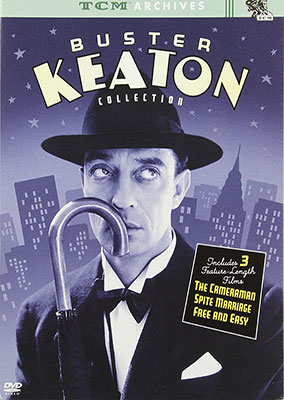 TCM Archives TCM Archives
2004 DVD edition
Buster Keaton Collection (1928-2004), black & white and color, 245 minutes total, not rated, including The Cameraman (1928), black & white, 76 minutes, not rated.
Warner Home Video, 67009, UPC 0-12569-70092-5.
One single-sided, dual-layered, Region 1 NTSC DVD disc (two DVDs in the set); 1.33:1 aspect ratio picture in full-frame 4:3 (720 x 480 pixels) interlaced scan image encoded in SDR MPEG-2 format at 5.0 Mbps average video bit rate (capable of progressive scan upscaling to 60 fps); Dolby Digital (AC3) 2.0 stereo sound encoded at 192 Kbps audio bit rate; English language intertitles, optional English, Spanish and French language subtitles; 17 chapter stops; two plastic DVD trays on cardboard wrap in cardboard slipcase; $39.95.
Release date: 7 December 2004.
Country of origin: USA
Ratings (1-10): video: 7 / audio: 6 / additional content: 7 / overall: 7.
|
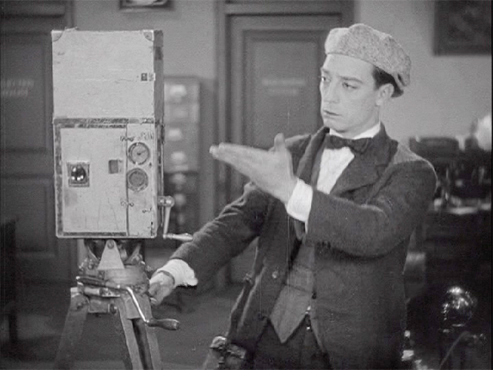
The overall quality of this DVD edition of The Cameraman is excellent, with improvements in the source materials over MGM Home Video’s laserdisc and VHS editions from the early 1990s. However, a close comparison reveals a few minor concerns in this home video edition.
Foremost, a few sections of this DVD edition features a slightly tighter cropping of the image area than that of the laserdisc and VHS editions from MGM, notably on the right side, with slivers more from the top and bottom of the image. The edges of the main titles have been poorly digitally expanded (as they were in the laserdisc edition), but many viewers won’t notice partially due to the typical overscan cropping of television monitors and the tighter cropping of this DVD.
That being said, viewers will love the improvement in source materials for this edition. The MGM editions were mastered from (what is reported to be) a 35mm fine-grain interpositive copied from the original camera negative for Robert Youngston in the early 1960s yielding excellent results, with missing sections replaced by what appeared to be a contrasty poor-to-good 16mm reduction positive (or very-poor 35mm print) yielding substandard (and quite distressing) results. In this new edition, the sections missing from the excellent 35mm interpositive have been replaced by a very-good 35mm positive. The viewing results are a vast improvement over previous editions, being closer in quality and not causing jarring transitions between materials. The new source materials still have a light amount of speckling, dust, marking, splices, and very minor emulsion damage (scuffing, chips and scratches) and beginning decomposition.
The musical accompaniment for this edition by Arthur Barrow is performed on MIDI synthesizers that thankfully replaces the poorly-reproduced piano score from the MGM editions. The score is utilitarian, in a cutesy-corn way, and is hardly to be considered a first-class effort.
Also included as supplementary material is audio commentary on The Cameraman by Glenn Mitchell, author of A-Z of Silent Film Comedy: An Illustrated Companion; and a photo montage from the production of The Cameraman (47 photos). Mitchell’s commentary is entertaining but a little uninformed, as he makes a small number of unresearched and inaccurate statements regarding actors’ filmographies and the survival status of a couple of films. Mitchell also manages to mispronounce Marion Davies’ name more than once. The two-minute introduction of The Cameraman by Robert Osborne is inconsequential.
|
This Region 1 NTSC DVD edition has been discontinued
and is . . .
|

|
|
|
Other silent era BUSTER KEATON films available on home video.
|
|
Buster Keaton filmography in The Progressive Silent Film List
|
|
|

LINKS IN THIS COLUMN
MAY TAKE YOU TO
EXTERNAL WEBSITES
•
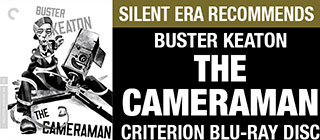
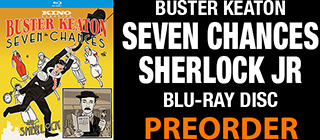


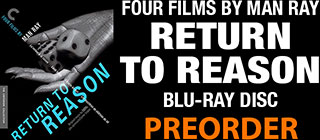
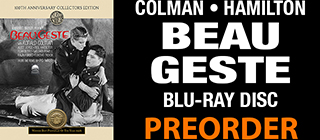

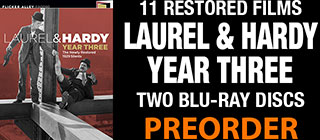
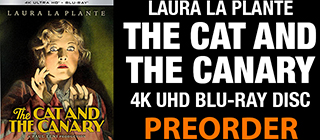


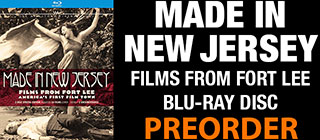
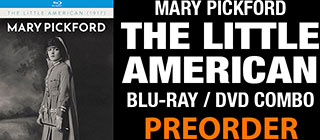
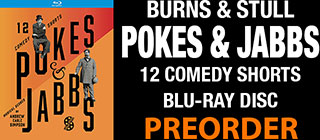
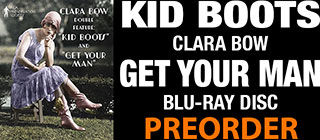
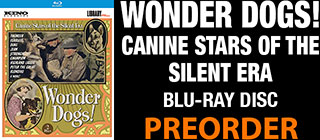
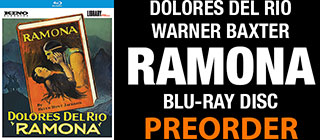
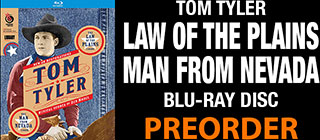
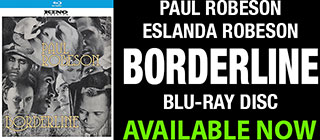
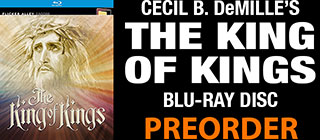
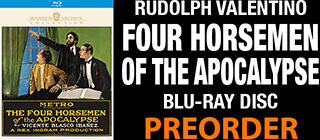
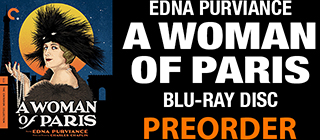
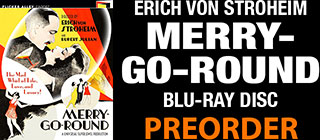

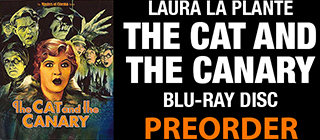
•
|




































